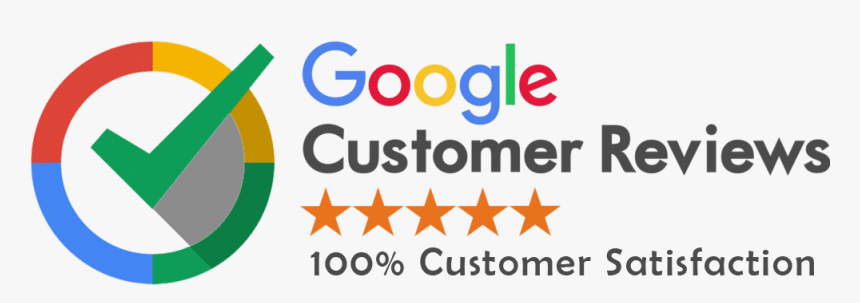Building a strong web presence involves more than simply launching a website. Businesses now seek smarter platforms that interact with users, deliver personalized experiences, and adjust quickly to changing needs. That’s where dynamic websites come in. These websites are designed to update content in real-time, handle user input efficiently, and work seamlessly with databases and content systems. In this article, we’ll go over the essential aspects that make dynamic website development a key factor in business success.
What Is a Dynamic Website?
A dynamic website displays different content and allows user interaction. It uses server-side scripting languages like PHP, ASP.NET, or Python to pull data from a database and show it in real-time. Every time a user visits the site or takes an action, the website can respond differently based on stored data or preferences.
In comparison, a static website always looks the same unless someone manually changes the code. Dynamic websites make interaction easier, content updates faster, and user engagement stronger.
Why Dynamic Websites Are Important for Businesses
- Real-time Updates: Content can be added, edited, or removed easily using a CMS.
- User Interaction: Forms, login portals, dashboards, and search functions help users stay engaged.
- Personalization: Websites can display different content based on user behavior, location, or preferences.
- Scalability: Dynamic websites can grow with your business and handle complex needs.
Professional Appearance Matters
No matter how much content you include, a website without a professional design fails to attract serious users. A well-structured Website, visually appealing layout is the first impression of your brand.
- Use high-quality graphics
- Maintain consistency in colors and fonts
- Avoid cluttered designs
- Ensure all visual elements load quickly
The layout should guide users smoothly through the content without distractions. Too many pop-ups, animations, or mismatched sections can cause frustration.
Smart Use of Containers
A flexible container is essential in dynamic website development. It helps maintain structure and keeps content organized. Most modern sites use container-based frameworks like Bootstrap, which allow developers to manage different content sections cleanly.
Using a container layout helps separate the main content from the rest of the page. This gives the site a neat and modern look.
Navigation That Makes Sense
Navigation plays a crucial role in how users interact with your site. Dropdown menus, sidebars, and header menus should be easy to find and use.
- Keep it simple and logical
- Limit the number of menu items
- Highlight the current page
- Use icons if necessary to enhance understanding
A clear navigation structure ensures users don’t get lost, and it helps search engines understand your site better.
Managing Content Efficiently
One of the biggest challenges in dynamic websites is organizing large volumes of content. A content management system (CMS) is crucial. WordPress, Joomla, and Drupal are popular CMS platforms.
Key points:
- Use categories and tags for easier navigation
- Ensure fast loading of content-heavy pages
- Use pagination to split large sections
When designing a layout, it should fit the content, not the other way around.
Mobile Responsiveness Is a Must
With most users browsing websites on mobile devices, responsiveness is no longer optional. A dynamic website should adapt to different screen sizes and work smoothly on all devices.
Tips:
- Use flexible grids
- Optimize images for mobile
- Ensure buttons are easy to tap
- Avoid flash-based elements
A responsive website keeps users engaged and improves your search engine ranking.
Speed Optimization
Speed is a critical factor for dynamic websites. Users won’t wait long for a page to load. The slower the site, the higher the bounce rate.
Speed tips:
- Minify CSS, JavaScript, and HTML
- Use browser caching
- Compress images
- Use Content Delivery Networks (CDNs)
Regular performance testing with tools like Google PageSpeed Insights can help identify and fix issues.
Database Integration
Dynamic websites rely on databases to store and retrieve information. Whether it’s user data, blog posts, or product listings, the connection to a database must be fast and secure.
Recommended practices:
- Use reliable database systems like MySQL or PostgreSQL
- Protect sensitive data with encryption
- Optimize database queries
Make sure backup systems are in place to prevent data loss.
Security Is Non-Negotiable
Security risks are higher for dynamic websites. User data, login portals, and form inputs can be exploited if not protected.
Steps to improve security:
- Install SSL certificates
- Use strong password policies
- Implement CAPTCHA for forms
- Protect against SQL injection and XSS attacks
A secure site builds user trust and avoids legal trouble.
SEO-Friendly Features
Dynamic websites must also be optimized for search engines. A few simple changes can improve visibility and ranking.
- Use clean, readable URLs
- Add relevant meta tags
- Create unique, high-quality content
- Add alt tags to images
- Submit a sitemap to Google
Avoid duplicate content and keep your site updated regularly.
CMS Selection Based on Need
Choose a CMS that matches your business size and complexity:
- WordPress: Best for blogs and small to medium business sites
- Drupal: Suitable for enterprise-level projects
- Magento: Ideal for eCommerce platforms
- Custom CMS: For unique project requirements
Make sure the CMS you choose allows flexibility for future expansion.
Real-Life Use Cases of Dynamic Websites
Dynamic websites can be used in a wide range of industries:
- eCommerce Stores – Product listing, filters, live chat, and customer login
- Real Estate Platforms – Property listings, search filters, agent dashboards
- Educational Portals – Online courses, user login, dashboards, performance tracking
- Job Portals – Employer and candidate profiles, search and filter options
- Healthcare Systems – Appointment scheduling, medical history, user panels
Performance Monitoring
A successful website needs to be monitored and maintained. Use tools like:
- Google Analytics
- GTmetrix
- Uptime Robot
Track metrics such as bounce rate, average session time, and loading speed to make timely improvements.
Why Choose RedSpider Web & Art Design?
RedSpider Web & Art Design is a trusted name in Dubai for developing powerful and elegant dynamic websites. With a strong portfolio and years of experience, the company provides:
- Tailored design and development services
- High-performance database integration
- Secure, mobile-friendly platforms
- CMS customization and SEO optimization
You can check their services at RedSpider Website.
Final Thoughts
Dynamic website development is about building platforms that evolve, respond, and grow with user needs. From professional Web Design and navigation to backend security and CMS selection, every detail counts. Businesses that invest in dynamic websites not only gain better control over their digital presence but also build trust and loyalty among their users.
Focus on clarity, usability, speed, and security—and you’ll have a dynamic website that truly works for your brand.



